

 The Accurate Reloading Forums
The Accurate Reloading Forums  THE ACCURATE RELOADING.COM FORUMS
THE ACCURATE RELOADING.COM FORUMS  Guns, Politics, Gunsmithing & Reloading
Guns, Politics, Gunsmithing & Reloading  Optics
Optics  Leupold VX3 B&C vs CDS (update as of 4 April '11)
Leupold VX3 B&C vs CDS (update as of 4 April '11)Go  | New  | Find  | Notify  | Tools  | Reply  |  |
One of Us |
Planning on scoping a very classy Pre 64 in 257 Roberts.  I'm planning on mounting a 2.5-8x32. I'll be hunting large game, antelope, deer, sheep, caribou, upto elk size game. In my tactical life, I'm a turret twister; ie NF 2.5-10 and 5.5-22. For hunting, I want to make things simplier. Would like to have your opinions on the CDS system vs a B&C reticle. Alan | ||
|
| one of us |
I would double check to see if a 2.5-8 will fit with those scope mounts. Might want to go 3.5-10 2.5-8 are very short tubed. | |||
|
| one of us |
I have the 3.5-10 B&C on my 257 Roberts. At 10x magnification on a metric range (100, 200, 300, 400 & 500 meters) zeroed at 200 meters with a 100 grain bullet it is spot on out to 400 meters for each sub reticle. At 500 meters it hits about 2-3" below aim with the point of the bottom duplex. If I use the corners of the bottom duplex instead (where the point transitions to the thick part - hard to explain) it is right on. If you follow the instructins that come with it and experiment with your particular load it works pretty good. The only problem is it will only work at a specific magnification. If I understand the CDS system correctly it will work at any magnification but only for one specific load??? But I have not had one so can not say for sure. | |||
|
One of Us |
| |||
|
| One of Us |
Question about the CDS? Can one custom order for say 30-378, 180 Barnes X, with RL22? Does the CDS work the same as that Huskemaw scope you see on the long range sports shows; in other words you can have it on at 200 yards, then could turn it up to 1000 yards? | |||
|
| one of us |
The Leupold B&C reticle (as well as the LR and LRV reticles) is pretty good for the typical higher velocity load. That is, it will generally be within an inch or two at each of the specified yardages. For game hunting the use of a B&C type reticle as opposed to actually attempting to adjust the reticle via the turrets is far superior. By the way, the choice of the 2.5-8 is an excellent one for most game hunting situations. | |||
|
One of Us |
Have done some research and besides looking into the 3.5-10x40 w/ B&C reticle I am very intrigued with the Swaro Z3 3-10x42 with BRX reticle. It's got Swaro glass, near identical size/weight and a BDC reticle. Anyone have experience with "both" these reticles so as to shine a light on them? Might help me decide. The Swaro is a chunk more money but I do have the coin; for now. Looking at the specs I know the VX3 will fit in the S&K rings, on the rifle, and I feel confident the Swaro will to; the obj housing is .09" larger in diameter, filling in the gap between obj housing and barrel by 1/2 that; .0045". Alan | |||
|
| One of Us |
Leupold's Boone & Crockett reticle system is very similar to Kahles' TDS system and Swarovski's BRX system - just their looks differ somewhat, but the principle is all the same. These systems are intended for long-range shooting, and as such they typically recommend to zero at 200 yds (typically where the parallax has been factory set), and you have to shoot at the highest magnification, say 9x magnification if it is a 3-9x scope for maximum accuracy, being a scope having its reticle in the second plane. So accuracy is tied to a specific magnification, and although it (B&C type system) is "better" in some ways than a mil-dot, because it is much simpler and quicker to use in realistic hunting conditions for the occasional hunter (snipers are trained to be much faster with Mil-dot systems to be more precise over range out to 1000 yds), I prefer the Point-blank Range system (PBR) which better reflects the capability of my rifle's bullet/load combination where I do not have to compensate for hold-over. However this method is a limiting system and generally not meant for long-range shooting - naturally high-velocity magnums have a further range and the computation will reflect it. For the PBR method one must have a computer based trajectory system to do the modeling and you have to chronograph your loads - nothing special about it; it is fun anyway to better understand the ballistics of your bullet/load combo for reloaders rather than those hunters that buy ammo over the counter and want to apply it for his specific cartridge. My guess would be that these type of hunters that buy ammo over the counter seldom it ever bother to chrono loads; they simply accept what the ammo box tells them. A new development of late is Leupold's Custom Dial System (CDS). All you have to do is to contact Leupold with your ballistics data, and they’ll send you a dial custom, built to match the caliber and load you’re using. Sighting-in at different ranges will be quick and easy. But ..... again, there is a limiting factor - it is for a particular bullet having a specific BC at a given launch velocity, and when you change to another bullet with a different BC, then you are off the mark again. So, you need another dial, which you can obtain. In fact I suppose you can order as many Custom Dials as you please. Warrior | |||
|
| One of Us |
Let us look at a practical example of how the PBR method works. Scenario:- Let us take a 7 x 57 mm Mauser shooting a 175 gr Swift A-Frame bullet, with a BC of .493 at a modest muzzle velocity of 2,350 fps, assuming a sight height of 1.5" above the centre of bore, standard barometric conditions at an altitude of 4,500 ft where I typically hunt. Our quarry is going to be Springbuck with a vital zone of 8" in diameter, and to be conservative let us reduce it by half .... in other words we take a 50% contingency, so the vital zone diameter becomes 4" and the radius becomes 2 inches. The calculated results are:- Max PBR = 202 yds Zero Range = 173 yds Height @ 100 yds = 2.0 inches So, at 202 yds the bullet will hit 2" lower than the line of sight (LOS), but still comfortably in the vital zone area of 8-inches in diameter. The bullet will fall through the line of sight at 173 yds, the zero point, and then fall more rapidly in the next 29 yds. Naturally, if we do not take a 50% contingency, the PBR would be a bit further, i.e. 266 yards. A 2-inch radius allows for fairly precise shooting and that at 200 yards .... not bad if we consider a low muzzle velocity of 2,350 fps ..... the modest striking velocity between 100 yds ( 2,189 fps) and 200 yards (2,024 fps) adds to the appeal of the 7 x 57 mm that is known for yielding excellent bullet performance with lead-core bullets. See the difference between an impact velocity of 3,000 fps vs 2,000 fps with Norma's bonded bullet - the Oryx. 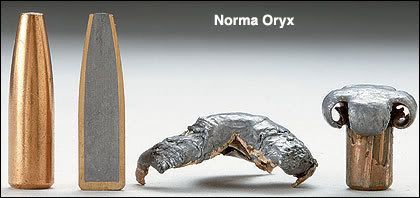 Over-expansion impair penetration Conclusion:- You see, we do not really need a bullet at 3,000 fps for medium distance hunting out to 200 yds! Let us look at incremental gains that can be had with faster velocity. When the same bullet is now fired through a 7 mm Rem Mag at 2,750 fps, i.e. 400 fps faster, we only gain 33 yds as the bullet will hit 2" low at 235 yds. The reality is that most shots in our country are taken at less than 200 yards anyway. Another reason why the 30-06 Spr (180 gr @ 2,625 fps) is still popular today in the face of the various faster .300 cartridges. The PBR method is used with no compensation for hold-over. However; with a very slight compensation distances can be extended farther, but it is good to know the PBR of your rifle, based on your bullet/load combination and the parameters that you have set for yourself. The only other way to increase the distance is to increase the parameter set for the vital zone - i.e. the distance above and below the LOS. Warrior | |||
|
One of Us |
Warrior, Thanks for the treatsie. Hope someone, someday appreciates what you've explained as I did. Though for me, it was unnecessary as I'm a turret twister from way back. Example.  Oh, am I've been a big fan of the PBR system for several decades now. Again, thanks. Alan PS. So again, anyone have any first hand experience comparing the Leupold B&C and the Swaro BRX? Alan | |||
|
| One of Us |
GSSP, I think the LR Dots/B&C Reticle is simpler and faster for a hunting rifle at most sane ranges. I've used them for the last four or five years and really like them. Longest shot was on a bedded pronghorn buck at 547 lasered yards. One shot, dead lope. The CDS is intriguing but I'm a KISS sort of guy and think dots/B&C is faster in the field... Kimber 308 with 2.5-8x36 with B&C reticle... zeroed at 225 yards, first hash mark 300 yards, second 400 yards, third hash 450 yards, top of post 500 yards... a top of back hold at 550 yards is a dead elk given the right conditions. Was out shooting to 500 yards this morning and snapped this picture: 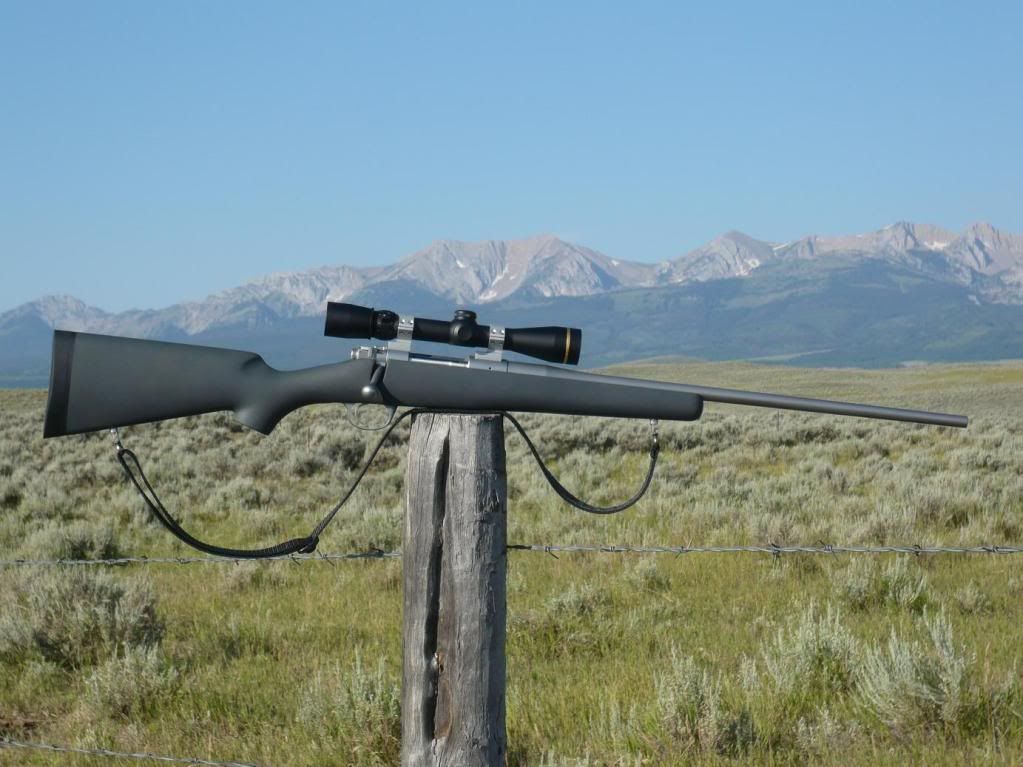 | |||
|
| one of us |
I have both the Leupold B&C and the Swarovski TDS (very similar to the BRX, except that it has one less horizontal line and no vertical hash marks). Unfortunately, I can't give you an exact caliber for caliber comparison because mine are mounted on a 300 WSM and a 280 Ackley. But I can tell you that I think the TDS/BRX is a little less cluttered than the B&C, which is still better than the very cluttered Zeiss Z-800. But in low light, the slightly heavier Leupold may be easier to see against a busy background. But then again, I think the Swarovski glass is a little brighter, so maybe that won't make a real-world difference. And who is shooting at long range in poor lighting conditions anyway? Maybe you do. Lastly, I think the Swarovski BRX gives you a couple more holdover points than the B&C reticle. Gathering from the "ethical" gist of the B&C Club, I suspect Leupold purposefully limited the range to a reasonable limit so as to not give the impression that elk should be shot at 800 yards with a .223 Remington. (That's a stretch, but you get the point). As you can see, I myself can't make up my own mind about the two either. Both work very well. Both are quality scopes. I lean towards the Swarovski a little more, but if $$ is a concern, then I would be equally happy with the Leupold B&C. Here's a shot down the TDS tube: 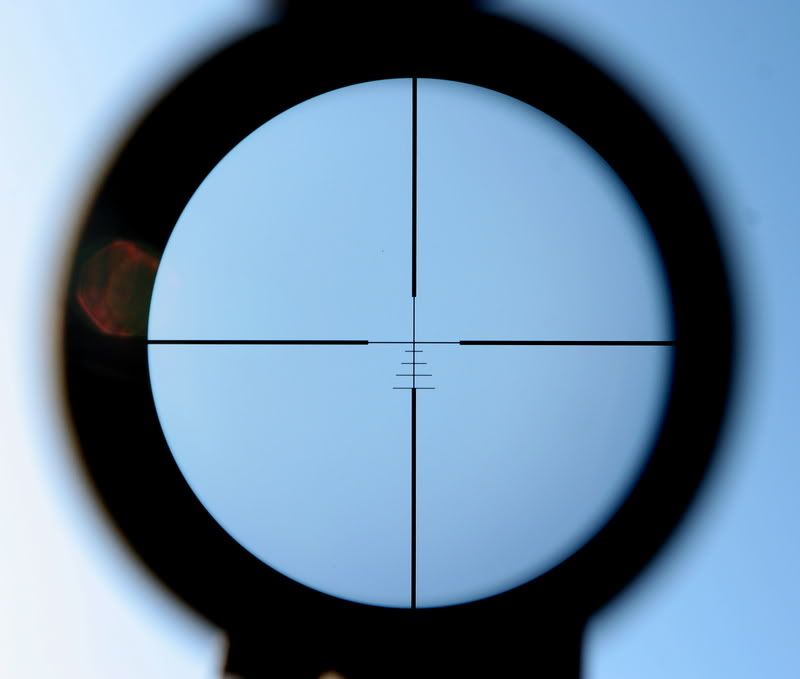 And just for fun, I have to show it mounted on my Kimber, which is apparently just as well balanced as the little jewel above, which is also wearing the slick one-piece Talley rings.  | |||
|
| one of us |
It would be really slick if they came up with a way to adjust elevation for each sub cross hair individually. | |||
|
One of Us |
It's been 8 months since I posted the original question. Here is what has happended. This concerns two rifles. The first, a very custom Pre 64 M70 got the VX3 2.5-8 with B&C reticle. It's been just fine with 115 BT's and 120 PT's. I've tested it out to 400 yds, smacking 10" steel as long as I do my part. It did, indeed, just barely fit within the length of the S&K mounts.   The above pics were taken by Charley Santoni of CS Sports in Calif while he was looking over the rifle for me. Those S&K rings are medium in height. I took it upon myself to try the low rings and I'm very pleased to report that the low's worked great.  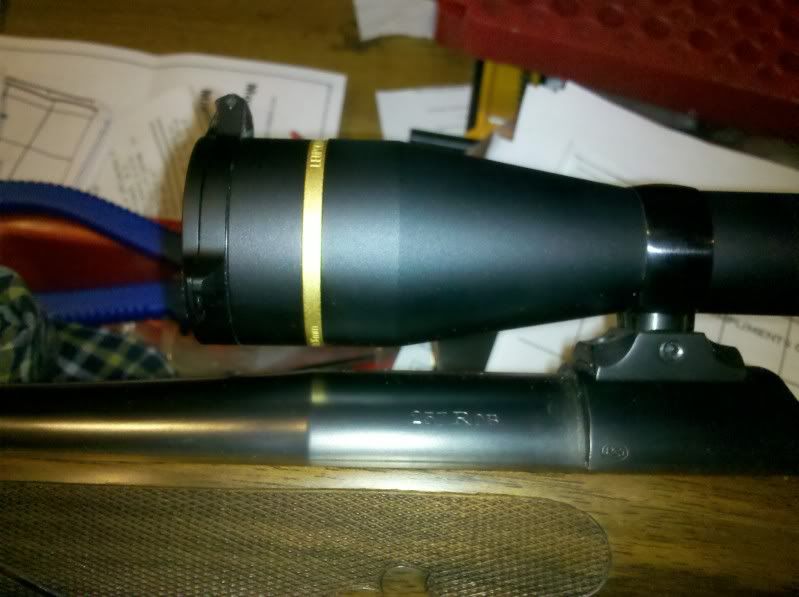 The next rifle is another Pre 64 M70 in 9.3x62; my purpose built Alaska rifle. It received the VX3 1.75-6 which I then had Leupold retrofit the CDS elev dials. I ordered 3 dials; one for 500' (Alaska's Seward Peninsula), one for 5500' (my main shooting elev in Utah) and one for 10,500' (favorite elk mountain in Utah). Got a price break as the ballistic data was all the same; just the elev and expected temperature was different. Normal price is $60 per dial but was $30 each for 2nd and 3rd. Retro fit is $90. Again, Charley Santoni took this pic but it is with the original elev turret. This also shows the low Leupold QR system which I am truly becoming very fond of.  I took these about 5 mins ago. As you can see the power ring just barely, and I mean BARELY, clears the base. 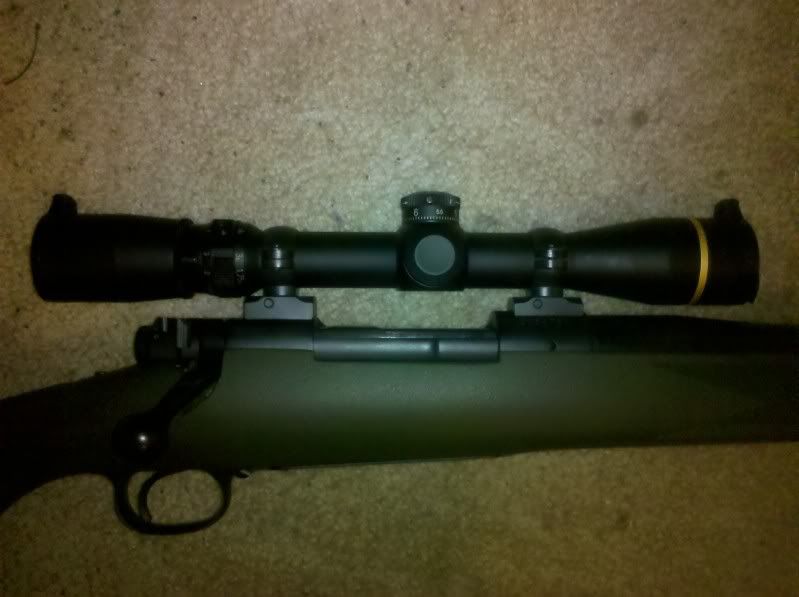 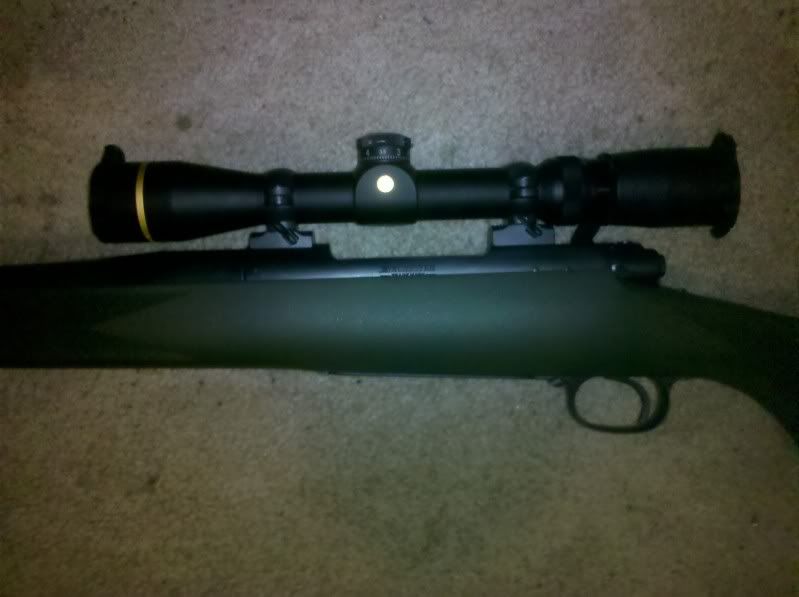 On Saturday, I had it out, zeroed @ 200 and tested it to 345 yds. Drop was right on. 10 mph wind from 1 pm which I did not take into account.  | |||
|
| Powered by Social Strata |
| Please Wait. Your request is being processed... |
|
 The Accurate Reloading Forums
The Accurate Reloading Forums  THE ACCURATE RELOADING.COM FORUMS
THE ACCURATE RELOADING.COM FORUMS  Guns, Politics, Gunsmithing & Reloading
Guns, Politics, Gunsmithing & Reloading  Optics
Optics  Leupold VX3 B&C vs CDS (update as of 4 April '11)
Leupold VX3 B&C vs CDS (update as of 4 April '11)

Visit our on-line store for AR Memorabilia

